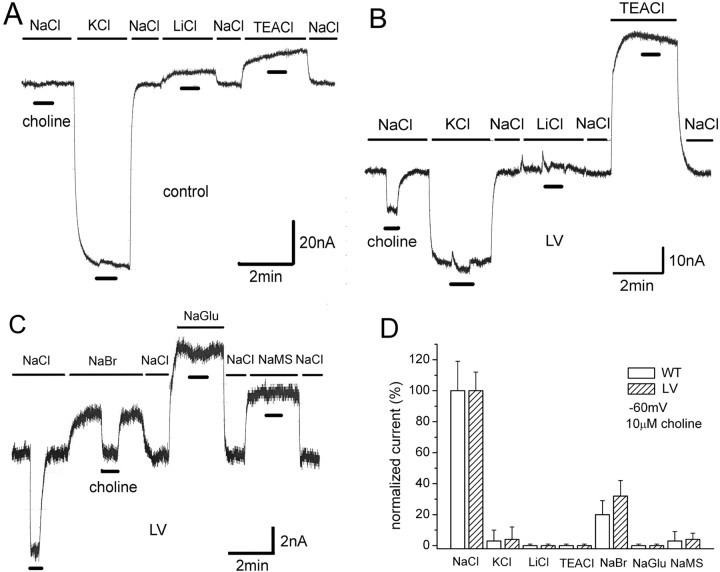Figure 5.
The role of cations and anions in the choline-induced current. A, The effect of cation substitutions in control oocytes. NaCl at 100 mm was replaced with equimolar KCl, LiCl, or TEACl. No choline-induced current was observed when 10 μm choline (thick black bars) was perfused onto water-injected control oocytes held at −60 mV. The baseline is normalized to the value in NaCl. B, Effect of cation substitutions in LV oocytes. Choline-induced current is observed only in NaCl. The magnitude of baseline shift with cation substitution is different LV oocytes compared with control oocytes. C, Effect of anion substitutions in LV-expressing oocytes. NaCl at 100 mm was replaced with equimolar NaBr, NaGlu, or NaMS. Choline-induced current was observed only in NaCl and NaBr. No choline-induced current was observed in water-injected control oocytes. The magnitude of baseline shift with anion substitution is different LV oocytes compared with control oocytes (data not shown). D, Summary of cation and anion dependence of choline-induced current (n = 5). Choline-induced current depends strictly on Na+ but less stringently on Cl−, because Br− can partially replace Cl−. Essentially no difference exists in ionic dependence between WT and LV hCHT-expressing oocytes.

